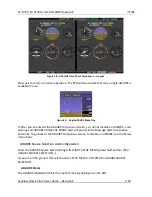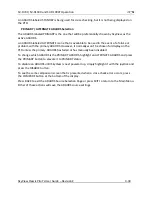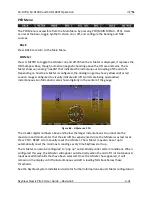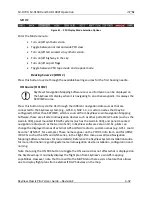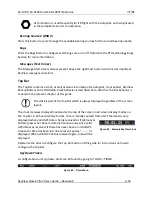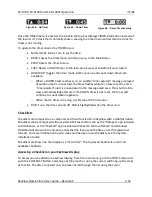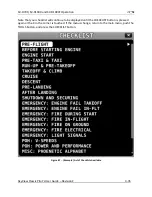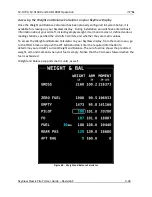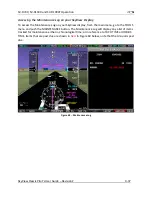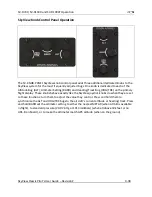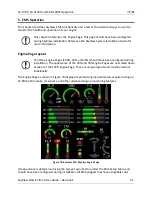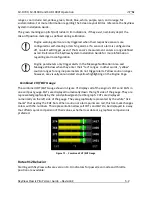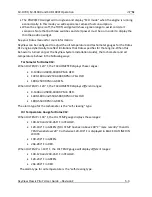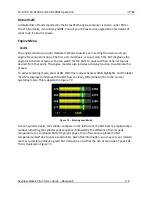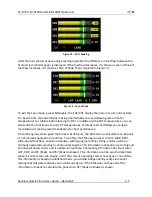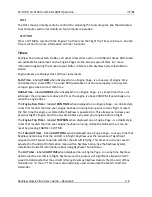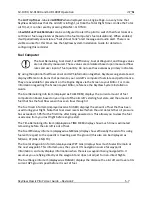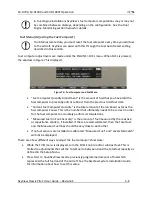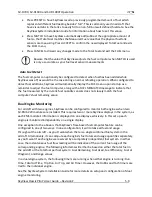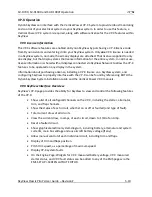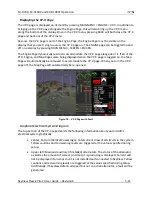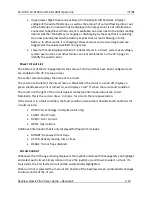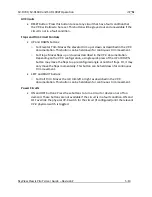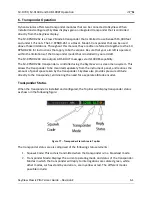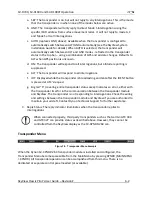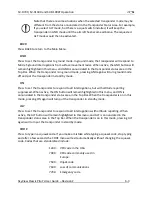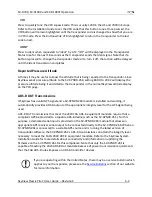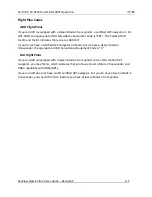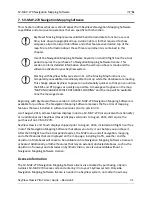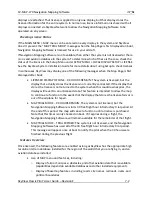
SV-D700, SV-D1000 and SV-D1000T Operation
SkyView Classic Pilot’s User Guide –
Revision Z
5-5
Figure 73
–
EGTs Peaking
After the last cylinder peaks during a leaning operation the difference in fuel flow between the
first and last cylinder peaks is displayed. If the fuel flow decreases, it is shown as Lean of Peak. If
fuel flow increases, it is shown as Rich of Peak. This is depicted in Figure 74.
Figure 74
–
Lean of Peak
To exit the Lean mode, press LEAN again; the EGT/CHT display then returns to its normal state.
For best results, lean carefully by making small adjustments and allowing some time for
temperatures to stabilize before leaning further. In addition to the EGT temperatures, you can
also watch the fuel flow rate and CHT temperatures. Carefully read and follow your engine
manufacturer’s leaning recommendations for best performance.
On some engines, when given the proper set of inputs, the EMS can also calculate lean-of-peak
or rich-of-peak operation in real time. To do this, the EMS needs access to OAT, MAP, RPM,
Altitude and fuel flow, engine horsepower setting, engine redline setting, and be used on a
normally aspirated Lycoming or Continental engines. This information is based on Lycoming and
Continental power charts and is updated in real time. The leaning information has four states:
LOP, ROP, and PK (Peak), and PK? (Peak Unknown). This information can be used to determine
when it is safe to lean the engine, and if the current operating state is near peak or not. While
this information is based on published charts, you should independently verify via manual
leaning that this data matches your install and engine. If the EMS does not have all of the
information it needs to calculate the peak state, PK? (Peak Unknown) is shown.

